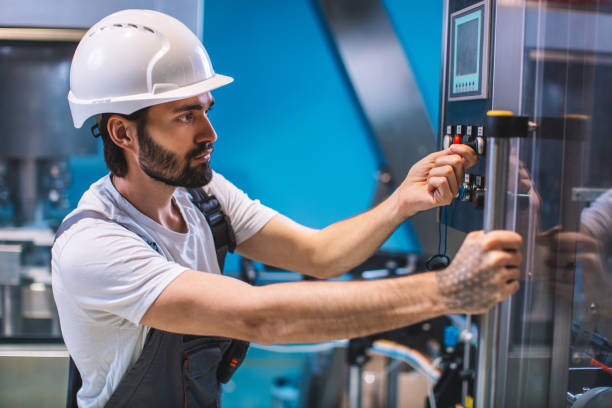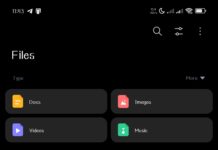Safety switches, also known as Residual Current Devices (RCDs), act as silent sentinels, constantly monitoring the flow of electricity in your circuits. At the slightest hint of an imbalance or leakage, they swiftly cut off the power, preventing potentially fatal electric shocks and reducing the risk of electrical fires.

With a variety of types, ratings, and features available, choosing the right one for your specific needs can be a daunting task. This guide will walk you through the key factors to consider, empowering you to make an informed decision that ensures the safety of your home and loved ones. We will also touch on specific models, such as the D325NR, DTU224NRB, and H365N, showcasing the diverse range of options available in the market.
Understanding the Different Types of Safety Switches
Fixed RCDs are installed in your switchboard and offer protection to entire circuits or groups of circuits. They are typically used for general household protection, safeguarding against electrical faults in various areas of your home.
Socket-outlet RCDs are integrated into individual power outlets, providing localized protection for appliances plugged into them. These are particularly useful for areas with a higher risk of electrical hazards, such as bathrooms, kitchens, and outdoor spaces.
Portable RCDs are plug-in devices that can be used with any appliance, adding an extra layer of safety, particularly when working outdoors or in wet conditions. Models like the D325NR offer additional portability and convenience. They are a convenient and flexible option for ensuring protection in various settings.
Combination RCD/MCBs combine the functions of a safety switch and a circuit breaker in a single unit. They offer both protection against electrical faults and the ability to control the flow of electricity in a circuit, making them a space-saving and efficient solution.
Key Factors to Consider When Choosing a Safety Switch

Sensitivity Rating
The sensitivity rating of a safety switch, measured in milliamps (mA), is a parameter that dictates how quickly the switch will trip or disconnect the power supply in the event of a leakage current. In simpler terms, it determines how sensitive the switch is to even the smallest electrical imbalances.
The most common sensitivity ratings are 30mA for general household use and 10mA for areas with a higher risk of electrical hazards, such as bathrooms and outdoor spaces. A 10mA safety switch offers greater protection but may also be more prone to nuisance tripping, while a 30mA switch provides adequate protection for most household applications with less likelihood of nuisance tripping.
Number of Poles
Safety switches are available in different pole configurations, including single-pole, double-pole, and three-pole. The number of poles refers to the number of active wires (live and neutral) that the switch protects. Single-pole switches are suitable for standard household circuits with a single active wire.
In contrast, double-pole switches protect circuits with two active wires, typically used for larger appliances or circuits with higher power demands. Three-pole switches are employed in three-phase power supplies, commonly found in industrial or commercial settings.
Type of Protection
Safety switches are categorized into two primary types: Type AC and Type A. Type AC safety switches are designed to protect against alternating current (AC) faults, which are the most common type of electrical faults in household settings. On the other hand, Type A safety switches offer additional protection against pulsating direct current (DC) faults.
These DC faults can be generated by some electronic equipment, such as variable speed drives and solar photovoltaic systems. While Type A switches provide broader protection, they are generally more expensive than Type AC switches. The choice between the two depends on the specific electrical devices and appliances in your home.
Breaking Capacity
The breaking capacity of a safety switch represents the maximum fault current it can safely interrupt without sustaining damage. Select a switch with a breaking capacity that aligns with the potential fault current in your electrical installation.
This ensures that the switch can effectively protect your circuits and appliances even in the event of a major electrical fault. Consult with a qualified electrician to determine the appropriate breaking capacity for your home.
Additional Features
Besides the core functionalities, some safety switches offer additional features to enhance convenience and monitoring. These may include a test button, enabling you to periodically check the switch’s operation, indicator lights that offer visual cues about the switch’s status, and even remote monitoring capabilities for keeping tabs on the switch’s performance from afar.
Choosing the Right Safety Switch for Specific Applications
For bathrooms and kitchens, it’s recommended to use safety switches with a 10mA sensitivity rating to provide maximum protection against electrical shocks in wet areas. Consider using socket-outlet RCDs for individual appliances or a fixed RCD to protect the entire circuit.
When using electrical equipment outdoors, always use a portable RCD or ensure that the outdoor power outlet is protected by a safety switch, such as the DTU224NRB, which is designed for outdoor use. Choose a switch with a weatherproof enclosure suitable for outdoor use.
Construction sites present a higher risk of electrical hazards due to the presence of water, dust, and heavy machinery. Use portable RCDs or ensure that all power outlets are protected by safety switches with a 10mA sensitivity rating.
Choosing a Safety Switch Brand and Model
When selecting a safety switch brand and model, consider the following factors:
Reputation and Reliability: Choose a reputable brand known for producing high-quality and reliable safety switches.
Warranty and Support: Check the warranty offered by the manufacturer and the availability of technical support.
Compatibility: Ensure the switch is compatible with your existing electrical installation.
Price: Compare prices from different brands and models, but don’t compromise on quality and safety.
Specific models can be excellent options depending on your specific requirements. Research their features, specifications, and reviews to determine if they are the right fit for your needs.
Conclusion
Choosing the right safety switch is an investment in the safety and well-being of your family and your home. By carefully considering the factors discussed in this guide, you can make an informed decision that ensures optimal protection against electrical hazards.
Remember, safety switches are just one component of a comprehensive electrical safety plan. Regular inspections, proper maintenance, and safe electrical practices are equally important. If you have any questions or concerns about choosing or installing safety switches, consult with a licensed electrician for professional advice and assistance.
By prioritizing electrical safety and taking proactive measures, you can create a secure and protected living environment for yourself and your loved ones.














